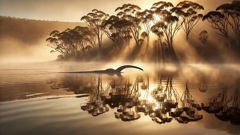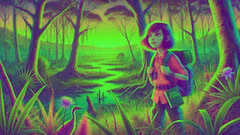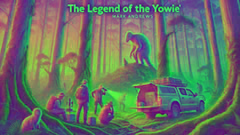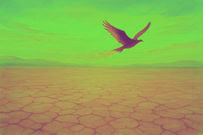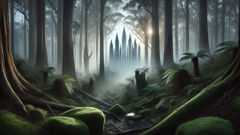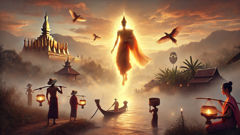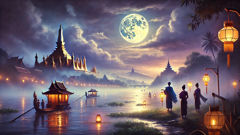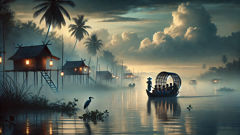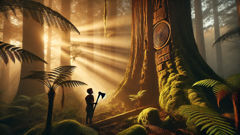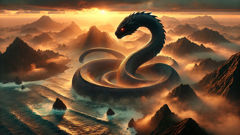Introduction
The Hawkesbury River winds through the heart of New South Wales, a living artery edged by sandstone cliffs and ancient gum trees whose roots have gripped the soil since time immemorial. Early morning mist clings to the surface, hiding the secrets of deep water and tangled weed, while kingfishers flash blue and silver above silent, dark pools. For generations, the river has been a lifeline for communities and wildlife alike, but beneath its placid surface, it’s whispered that something ancient stirs. Fishermen swap stories in riverside pubs about the one that got away—something too big, too quick, too strange for any line to hold. Children dare each other to swim out to where the water turns black and deep, and old-timers claim to have seen a long, sinuous shadow sliding beneath their boats on nights when the moon is high. This is the home of the Hawkesbury River Monster: a legend that refuses to fade, a shape that blurs the line between myth and reality. In a world mapped and measured, the river keeps a corner of itself untouched, a place where stories grow wild as river reeds. The legend is older than memory, perhaps older than speech itself—a tale told in flickers of movement just beneath the surface, in the sudden hush that falls on a group of picnickers, in the ripple that disturbs a glassy dawn. Whether truth or tall tale, the monster is part of the river’s soul, calling out to the curious, the brave, and the hopeful with the promise that the unknown is never far away.
Whispers on the Water: The Birth of a Legend
Long before settlers built timber jetties and river ferries traced their steady paths across the Hawkesbury, the Darug people told stories around smoky campfires about a spirit that lived in the river’s deepest pools. They called it Mirreeulla—a word that slipped through generations, always spoken in hushed tones. To them, the river was not merely water and stone but a living being with moods and memories, its spirit woven into every eddy and bend. The Darug believed Mirreeulla was a guardian, sometimes fierce, sometimes gentle, and always watching. Its form was never described in detail; it was felt rather than seen, a force as old as the river’s course through the dreaming earth.

When European settlers arrived in the late 18th century, they brought with them tales of sea serpents and monsters lurking at the world’s edge. These newcomers heard the Aboriginal stories and, as the years passed, blended them with their own. Fishermen began to speak of a massive creature with a long neck and paddle-like flippers, something out of the fossil beds at Winton or the legends from Scotland’s Loch Ness. The Hawkesbury River Monster, as it became known, was said to be as long as two rowing skiffs end-to-end. It would break the water’s surface on still nights, its back arching like a submerged log, only to disappear before anyone could raise an oar.
By the 1870s, reports grew more detailed. A ferryman named Tom Broughton claimed that on a foggy evening near Wisemans Ferry, his boat struck something solid. He glimpsed what he swore was a leathery tail slipping under the boat, followed by a broad, flat head crowned with kelp and weed. The story spread like wildfire. Sightings were reported up and down the river: in the shadowy mangroves near Brooklyn, beneath the towering cliffs at Spencer, even in quiet inlets where pelicans nested. Some said the monster was a survivor from another era, a living relic of prehistory. Others believed it was the river’s way of reminding people to tread carefully—to respect the depths and the mysteries they held.
In riverside towns, stories became currency. Pub owners pinned news clippings of supposed monster sightings to their walls; children crafted crude drawings of long-necked beasts and stuck them on refrigerator doors. The river’s reputation grew, attracting not just locals but also curious outsiders—naturalists, cryptozoologists, and skeptics alike. Each added their own twist to the tale, and with every retelling, the monster grew more real, its legend swelling like the river after heavy rains.
The 20th Century: Science, Skepticism, and the Search for Truth
As the 20th century dawned, Australia’s relationship with its rivers evolved. The Hawkesbury was no longer a remote waterway; it was a place of industry and recreation. Paddle steamers chugged past newly built rail bridges, and weekenders from Sydney arrived to fish, swim, and camp along its banks. Yet, the legend of the Hawkesbury River Monster only grew stronger, fueled by new sightings and a changing sense of what was possible in the age of science.
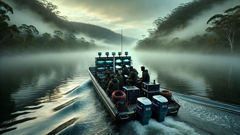
In 1924, a local paper published an interview with Nellie O’Brien, a respected matriarch from Mooney Mooney. She described seeing a long-necked beast one dawn as she gathered yabbies from a muddy creek. According to Nellie, it rose silently from the water, its skin mottled green and grey, its eyes reflective like moonstones. The story captured the public’s imagination, and soon, amateur monster hunters armed with box cameras and homemade harpoons began combing the river’s backwaters.
By the 1960s, cryptozoologists—scientists who searched for animals unrecognized by mainstream biology—became fascinated by the Hawkesbury’s mystery. Dr. Marcus Fielding, a British researcher known for his work on lake monsters in Canada and Scotland, arrived with a team of students and sonar equipment. They spent weeks mapping the riverbed, listening for unusual echoes and documenting local folklore. Fielding’s final report was inconclusive but tantalizing: he noted strange readings in deep water near Bar Point and collected dozens of eyewitness accounts from fishermen and houseboat owners. The scientific world remained skeptical, but the search itself became a local event.
Alongside these formal investigations, the monster became entwined with the Hawkesbury’s identity. Artists painted murals of its serpentine form on railway underpasses; schoolchildren wrote poems imagining its lonely life beneath the reeds. The river monster appeared on postcards and tea towels, its image shifting from terrifying to almost endearing—a symbol of the untamed spirit of Australian nature. Yet, amid the fun and spectacle, some took the search very seriously. Each year, a handful of determined souls launched expeditions, convinced that proof was just one photograph away.
The river monster legend attracted skeptics, too. They argued that all sightings could be explained by floating logs, stray seals, or playful dolphins venturing upstream. Some pointed to the tricks of light on water or the fevered imaginations of those who’d had one too many drinks at a riverside pub. But even the doubters couldn’t quite dispel the allure of the unknown. The legend persisted, growing deeper roots with each retelling—much like the river itself, forever reshaping its course but never losing its essence.
The Monster and the Community: Life on the Edge of Mystery
By the dawn of the 21st century, the Hawkesbury River Monster had become more than a story. It was a thread woven through the life of every riverside community—a creature as much a part of local identity as the jacaranda blooms in spring or the muddy brown floodwaters after a storm. In Brooklyn, Dangar Island, Wisemans Ferry, and all the small towns strung along the water’s edge, the legend was both a source of playful pride and a reminder of how little people truly understood about their home.
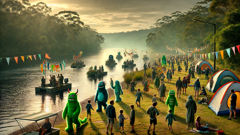
Children grew up daring each other to swim out to Monster’s Reach—a patch of water near an old sunken barge where weeds grew thick and the bottom dropped away suddenly. Older residents swapped stories over bowls of steaming fish soup in cafes overlooking the river. Local artists painted their own visions of the creature: some imagined it as a gentle giant nibbling on lilies at dusk; others depicted a sharp-toothed guardian of lost secrets. Tourists arrived each spring for the Monster Festival, donning homemade costumes and floating papier-mâché monsters down the river while local musicians played blues and folk on makeshift stages.
But for many, belief in the river monster was not just fun and games. There were those who had seen something strange—a shadow gliding beneath their boat in the dusk, a ripple that seemed to move against the current, a pair of unblinking eyes breaking the surface just long enough to be sure you saw them. Some kept their stories to themselves for years, afraid of ridicule. Others shared them freely, inviting debate and discussion at every barbecue and birthday party.
The legend also inspired conservation efforts. Local environmentalists argued that protecting the Hawkesbury’s unique ecosystem meant safeguarding not just fish and birds but the stories that made the river special. They launched clean-up campaigns and educational programs, framing the monster as a symbol of nature’s fragility and mystery. Schools held essay contests on the importance of respecting wild places, and park rangers led boat tours highlighting both the facts and the folklore of the river.
For many locals, the Hawkesbury River Monster embodied the unknown—the part of life that can’t be catalogued or captured on camera. It was a reminder that, even in a modern world of satellite maps and instant information, there are still places where wonder survives. Whether it truly existed or not became almost beside the point. The legend brought people together, fostered curiosity, and offered a sense of adventure to daily life along the river’s banks.
Conclusion
The Hawkesbury River Monster remains a mystery—unconfirmed by science but alive in the hearts of those who live along its banks. Its legend is more than a story about a hidden creature; it’s about curiosity, respect for nature’s secrets, and the sense of wonder that lingers even in familiar places. Whether glimpsed in the corner of an eye at sunset or encountered only in dreams, the monster is a reminder that not all questions have answers, and sometimes the greatest treasures are the ones we find in our imaginations. In every ripple on the water, every shiver of wind through the reeds, there is an invitation to believe—if only for a moment—that magic still exists in the world.

